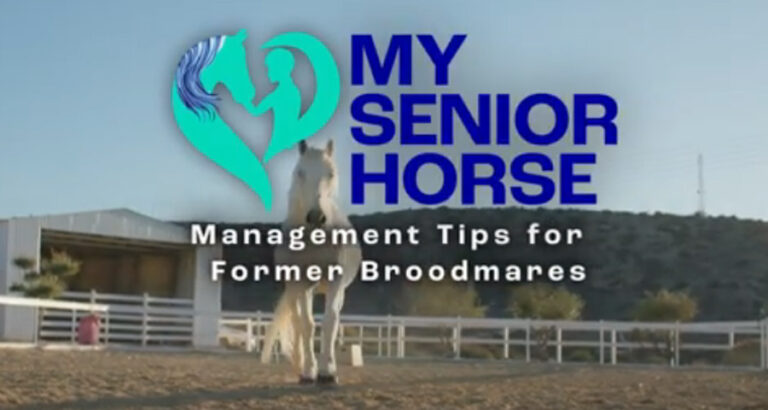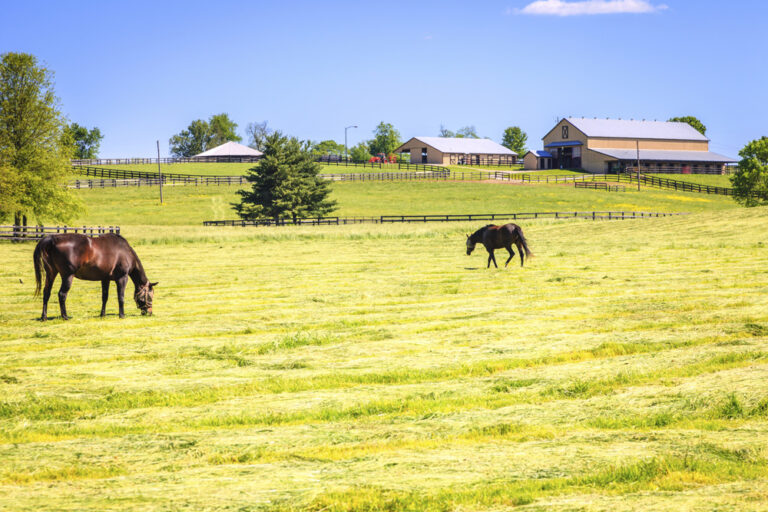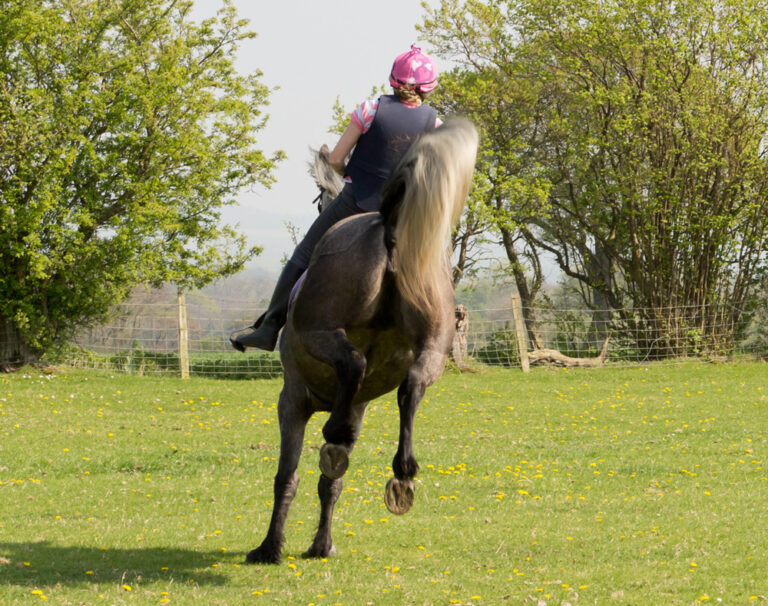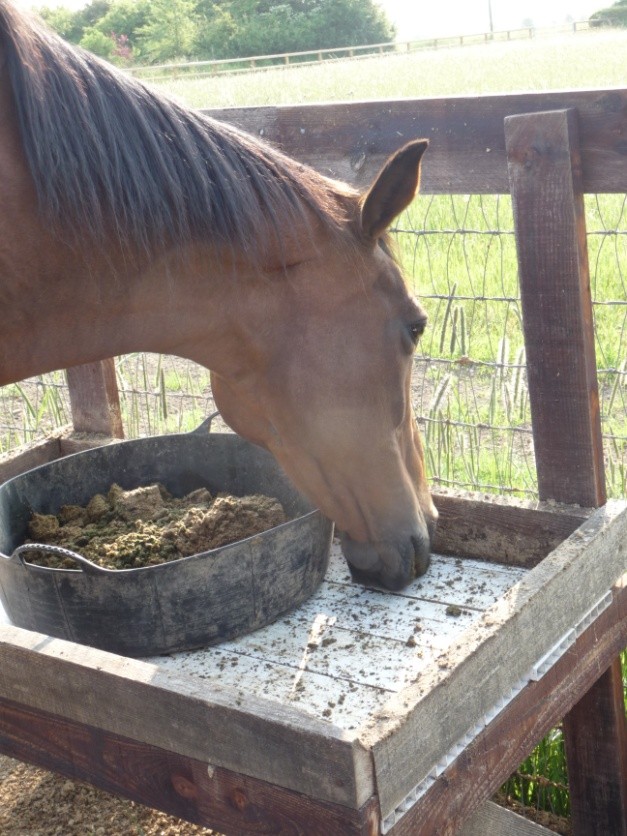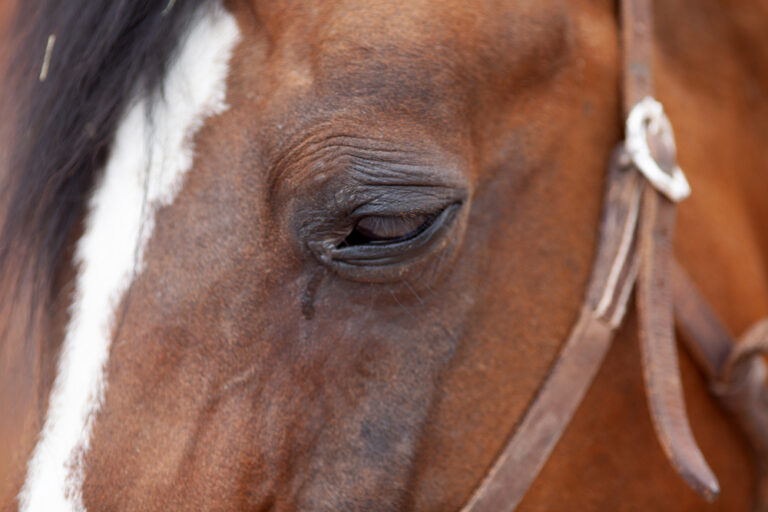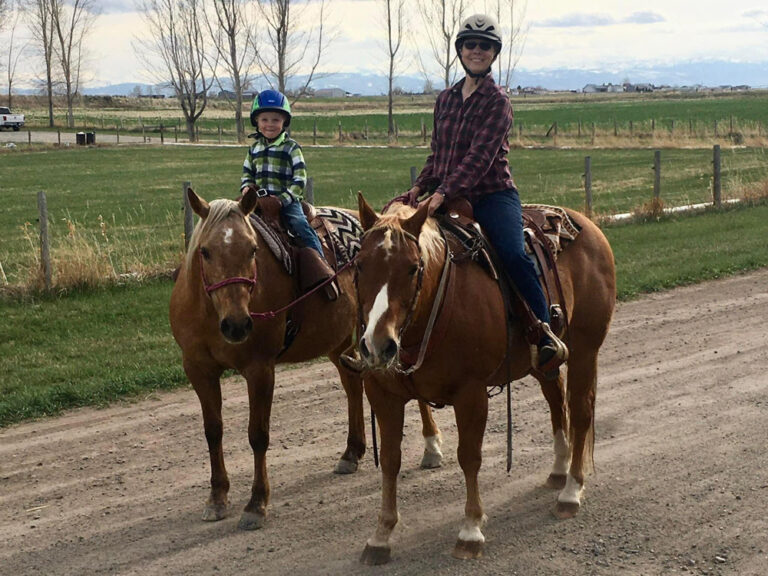Slow-feed hay nets were designed to increase the amount of time it takes a horse to consume a forage meal. Do they work? According to several recent studies, yes they can under certain circumstances.
In this article that will be part of a series of articles on hay nets, we outline what slow-feed nets are and report on a study done by the University of Minnesota1.
Why Were Slow-Feed Hay Nets Developed?
Horse owners used to try many things to extend the amount of time a horse spent eating a specific amount of forage. Their reasons were to improve the horse’s mental and physical health when horses were on a restricted ration. Owners also wanted nets to help reduce hay wastage.
Grazing muzzles came into vogue in the 1990s. These were designed to reduce the amount of grass a horse could consume during a specific amount of time on pasture.
Horse owners were already trying to do the same thing with hay consumption. They would double-up traditional hay nets to try and slow the consumption of the horse’s hay allotment for each meal. That lead to the creation of slow-feed hay nets in about 2011.
What Are Slow-Feed Hay Nets
Instead of owners having to doubling-up the nets, manufacturers began making hay bags and nets with smaller and smaller openings. This forces the horse to work harder to get its hay. That slows the consumption of that allotment of hay and mimics the “grazing” of horses that get small amounts of feed over long periods of time. Horses tend to graze 14 or more hours a day if on 24-hour turnout.
There now are many types of slow-feed hay options. Hay nets come with various sizes of holes. Holes in nets or bags should have less than 2″ openings to help slow intake. Those openings go down to a 1″ hole. Too small a hole might result in frustration behaviors.
Chosing the right opening size depends on several factors, including your horse/pony/donkey/mule size, the type of hay you are feeding, and how much you want to restrict them.
Types of Slow-Feed Hay Feeders
There are many options for slowing down the rate of intake of hay and haylage. Manufacturers have created a variety of nets as well as soft-sided bags with various types of openings, and hard-sided “barrels” with “grates” on the top where hay is accessed.
Some slow-feeders lay on the ground and are designed to be “played” with by the horse. Others are designed to be hung up. There are a variety of sizes, from small nets or bags to ones that can completely cover a small square or large round bale of hay.
Cautions for Hay Feeders
Horses can get frustrated at being slowed down in their hay consumption. For example, some paw at the feeder and there could be a risk of horses getting feet or shoes caught in the nets or feeder bag.
This might mean that you need to try a different type of feeder.
Recent work has suggested that using ground floor-based slow-feeders might enable the horse to best mimic the posture they use when grazing. The height of the box ideally needs to be adjusted to suit the size of the horse/pony. This is obviously a challenge in mixed herds (Bordin et al 20242).
Be careful using ground-based hay feeders if the conditions are muddy or sandy. That could cause issues with your horse’s GI tract if they ingest mud or sand with their feed.
Minnesota Slow-Feed Hay Nets Research
The University of Minnesota research took eight adult horses in box stalls and fed them in a variety of ways to measure hay consumption:
- off the ground not in a feeder
- large-holed hay net with 6″ (15.24 cm) openings
- medium-holed hay net with 1.75″ (4.45 cm) openings
- small-holed hay net with 1″ (2.54 cm) openings
Horses were given access to hay inside the nets for two separate 4-hour periods daily (7:00 to 11:00 a.m. and 4:00 to 8:00 p.m.). The researchers used grass hay that was fed at 1% of body weight twice daily.
The researchers recorded the following results in hung nets with various-sized openings:
| Feeding method | Rate | Amount eaten |
|---|---|---|
| Off the ground | 3.3 lbs (1.5 KG)/hour | 95% |
| Large-holed net | 2.9 lbs (1.3 KG)/hour | 95% |
| Medium-holed net | 2.4 lbs (1.8 KG)/hour | 89% |
| Small-holed net | 1.9 lbs (0.86 KG)/hour | 72% |
A second study looked at the amount of time it took to eat using these different methods.
- Feeding off the ground took 3.2 hours for the horse to eat one hay meal.
- Feeding with a large-holed hay net took 3.4 hours for one hay meal.
- Feeding with a medium-holed net took just over 5 hours for one hay meal.
- Feeding with a small-holed net took 6.5 hours for one hay meal.
Final Words
Slow-feed hay nets or other products that help reduce consumption of hay are useful when you need to limit overall consumption of forage. Work with your veterinarian and/or an equine nutritionist to ensure your equid is getting the minimum amount of a forage that is right for its nutritional and health needs.
Resources
- Using Slow Feed Hay Nets. University of Minnesota Extension.
- Effect of pony morphology and hay feeding methods on back and neck postures. Bordin, C.; Raspa, F.; Harris, P.; Ellis, A.D.; Roggero, A.; Palestrini, C.; Bergero, D.; Valle, E. 2024 Journal of Animal Physiology and Animal Nutrition. 108: 3-14
Further Reading
- 10 Tips for Feeding Forage to Horses. Patricia A. Harris, MA, PhD, VetMB, DipECVCN, MRCVS. MySeniorHorse.com
- Tips on Soaking Hay for Horses. Annette C. Longland, BSc(Hons), PhD, DIC. MySeniorHorse.com
- Use a Pasture Hay Feeder to Reduce Waste. Dr. Nancy Loving. MySeniorHorse.com
-
Editors of My Senior Horse are journalism professionals, most of whom are lifelong horse owners.View all posts




